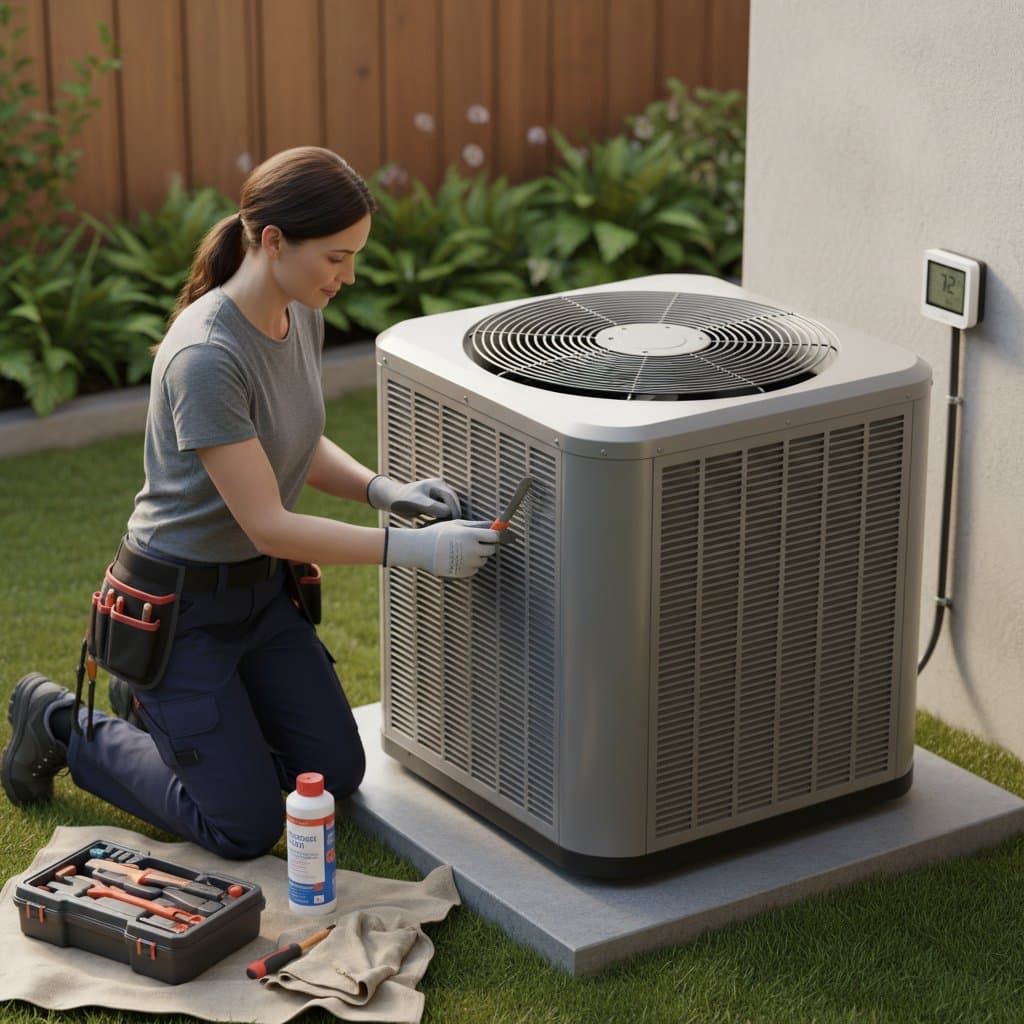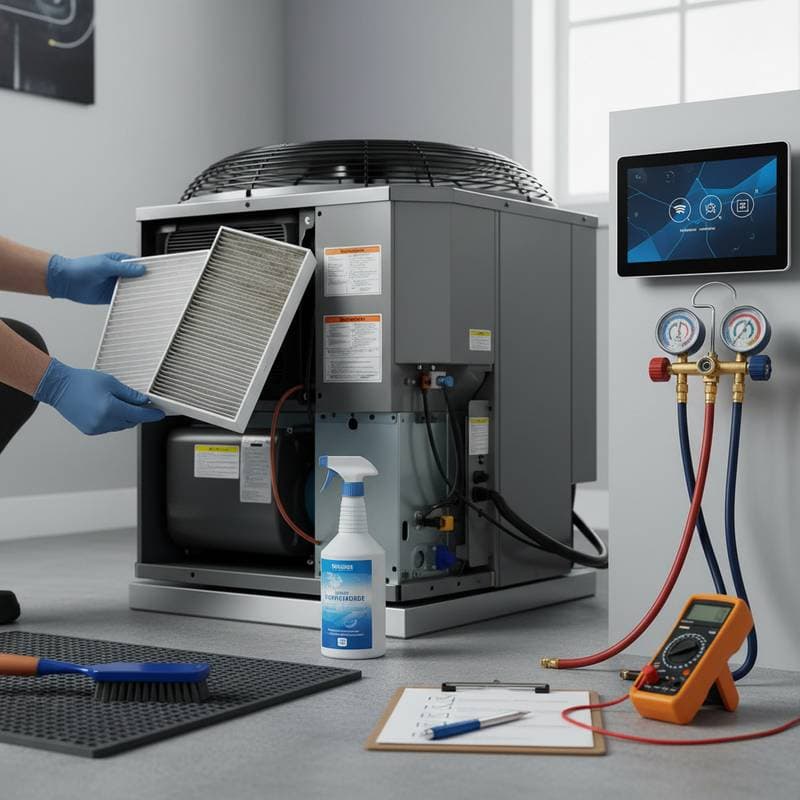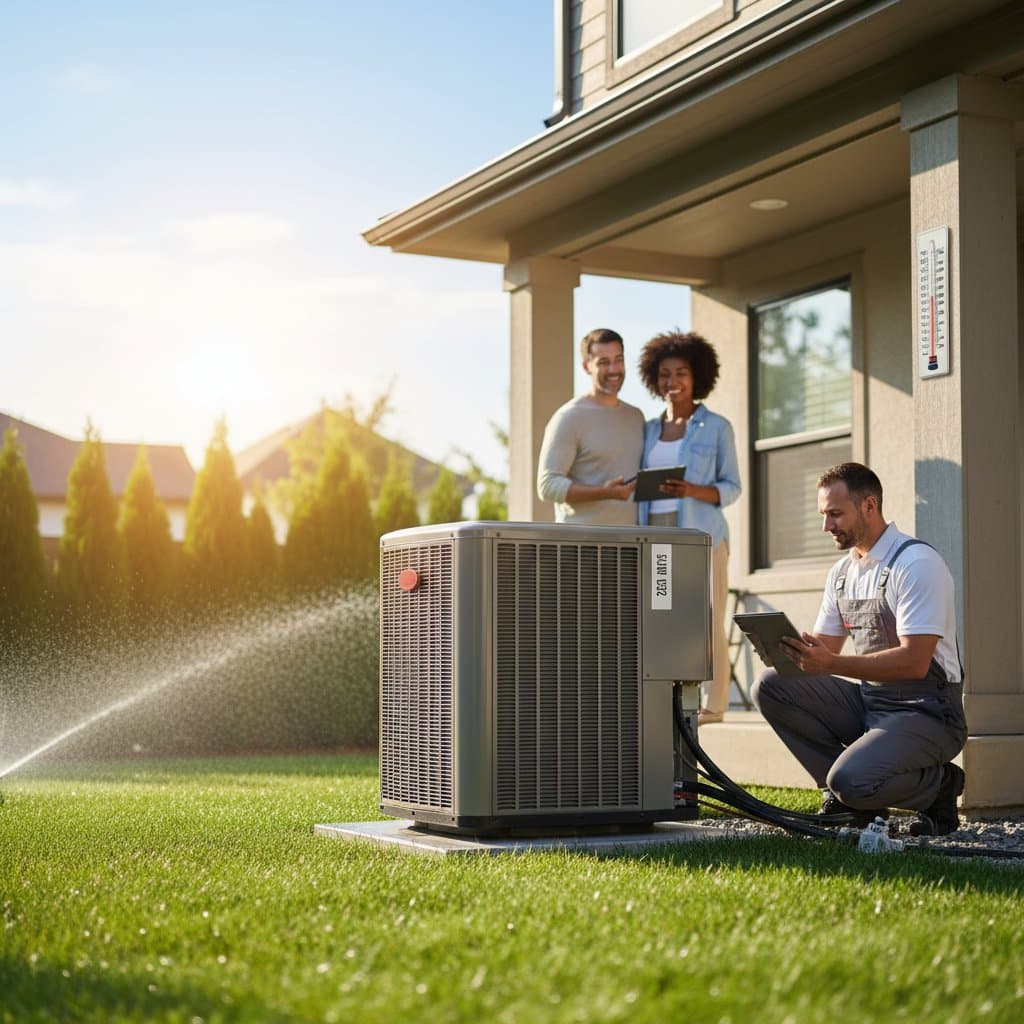Prepare Your AC for Summer: Key Maintenance Tasks
As temperatures climb, the air conditioner emerges as a critical component of home comfort. Proper upkeep ensures efficient operation, quicker cooling, and lower running costs. Neglecting routine care often results in diminished airflow, elevated utility expenses, and expensive fixes. Targeted actions maintain peak condition and sidestep seasonal failures.
Conduct a Comprehensive Inspection
Examine the outdoor condenser unit first. Remove leaves, soil, or other obstructions from the coils and fan. Preserve a minimum of two feet of clearance around the unit to facilitate unrestricted airflow. Inspect the coil fins for bends and use a fin comb—available at hardware stores for approximately ten dollars—to straighten them. This adjustment boosts cooling capacity and eases compressor workload.
Shift attention indoors to the air handler or furnace compartment. Detach the front panel and scan for dust accumulation or moisture traces on the evaporator coil and drain pan. Grime-covered coils can impair efficiency by up to 15 percent, as noted by HVAC professionals. For heavy deposits, arrange a specialist cleaning service instead of DIY efforts.
Refresh the Air Filter
A blocked filter impedes airflow and compels the system to labor excessively. Swap out disposable filters every one to three months, adjusted for local air quality and filter specifications. For reusable types, rinse thoroughly under water, allow complete drying, and reinstall. Filters typically range from ten to thirty dollars, providing a cost-effective method to sustain airflow and curb energy consumption.
Calibrate the Thermostat
The thermostat dictates system efficiency. Confirm seamless transition between heating and cooling modes, along with precise temperature detection. For outdated mechanical units, upgrade to programmable or smart models. These automate adjustments during absences, potentially lowering energy use. Entry-level programmable versions begin at forty dollars, with sophisticated smart units exceeding two hundred dollars.
Clear the Condensate Drain Line
This line expels moisture from the evaporator coil. Blockages from algae or debris lead to backups, leaks, and potential damage. Access the drain cap and introduce a solution of one cup white vinegar mixed with one cup warm water. Allow thirty minutes for action, then flush with plain water. Such maintenance prevents water intrusion and mold development within the unit.
Secure Electrical Connections and Belts
Insecure wiring or deteriorated belts provoke erratic performance or unusual sounds. Disconnect power before any examination. Secure evident connections with a screwdriver and check for corrosion indicators. Address frayed wires or split belts through a qualified technician. Standard service calls, which often encompass these verifications, cost between seventy-five and one hundred fifty dollars.
Evaluate System Operation
After completing tasks, activate the system for a minimum of fifteen minutes. Verify uniform airflow from all vents and cool output temperature. Monitor for rattles or hums signaling vibrations or electrical faults. Employ a thermometer to gauge the differential between return and supply vents; a fifteen- to twenty-degree variance indicates normal function.
Sustain Efficiency Through Routine Care
Regular attention prolongs air conditioner longevity and elevates indoor comfort amid intense heat. Maintain a straightforward checklist and perform these procedures at the onset of each cooling period. Efforts such as coil cleansing, filter renewal, and drain inspections forestall significant malfunctions. Should cooling falter post-maintenance, engage a professional for in-depth assessment to identify underlying concerns promptly. Invest time now to secure consistent cooling and stable bills all season.





